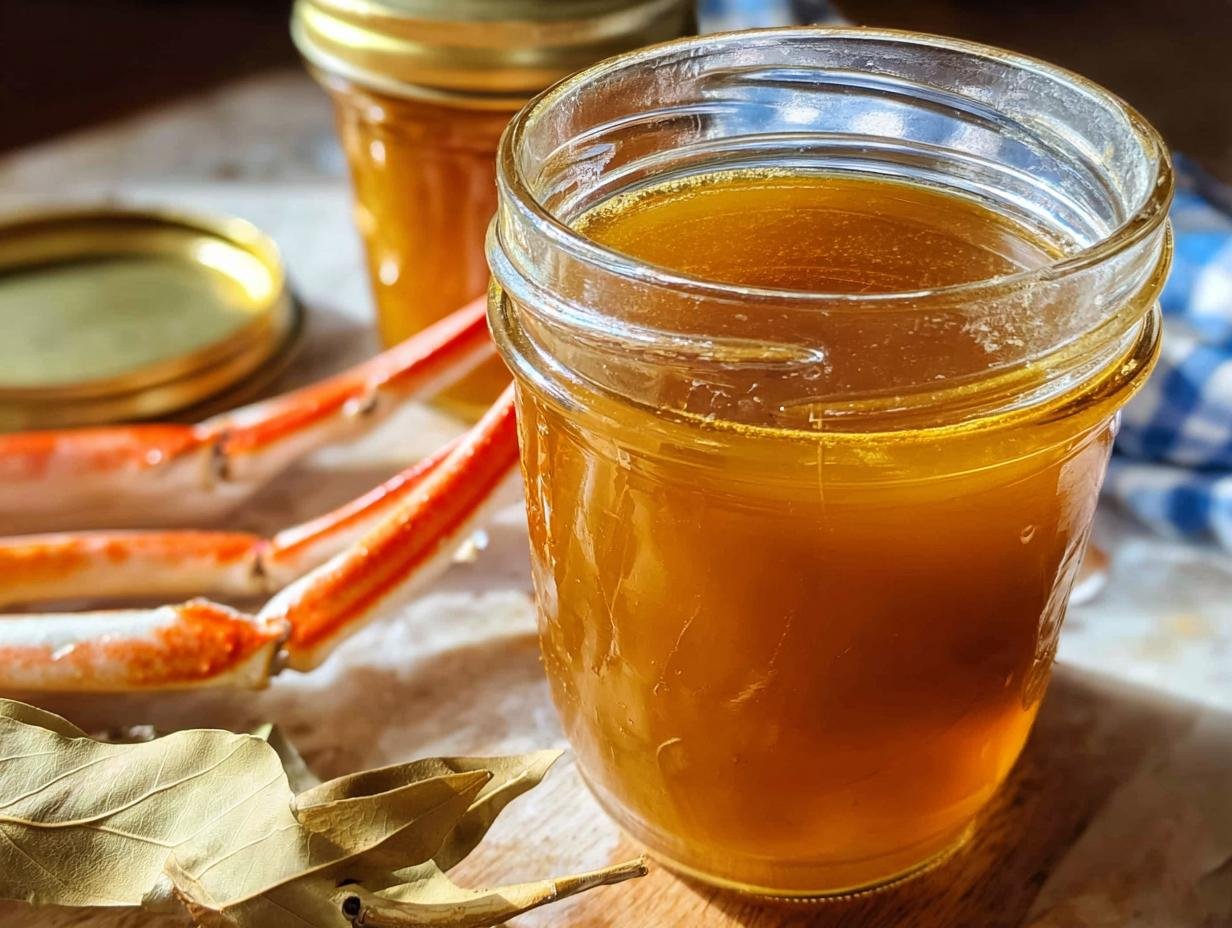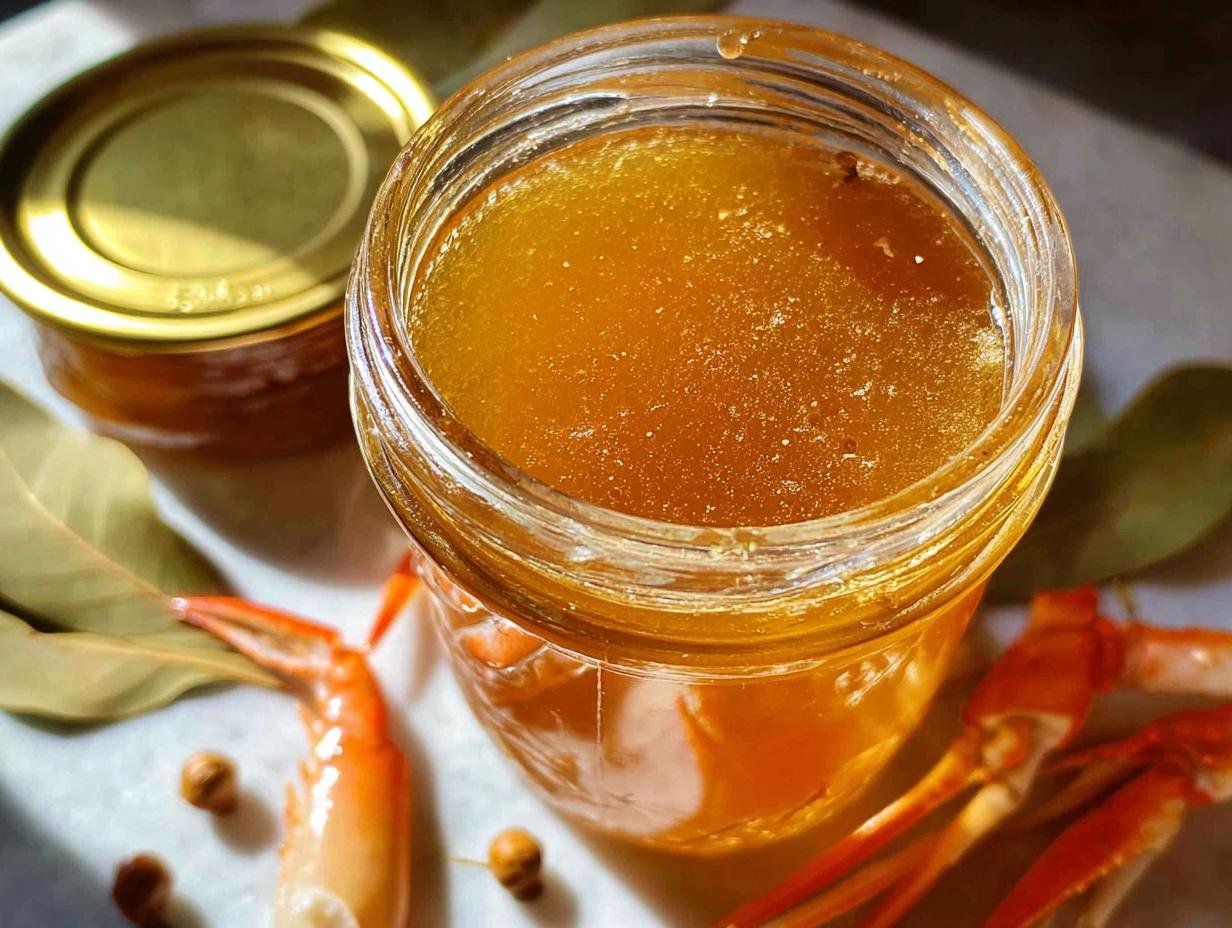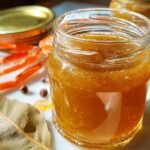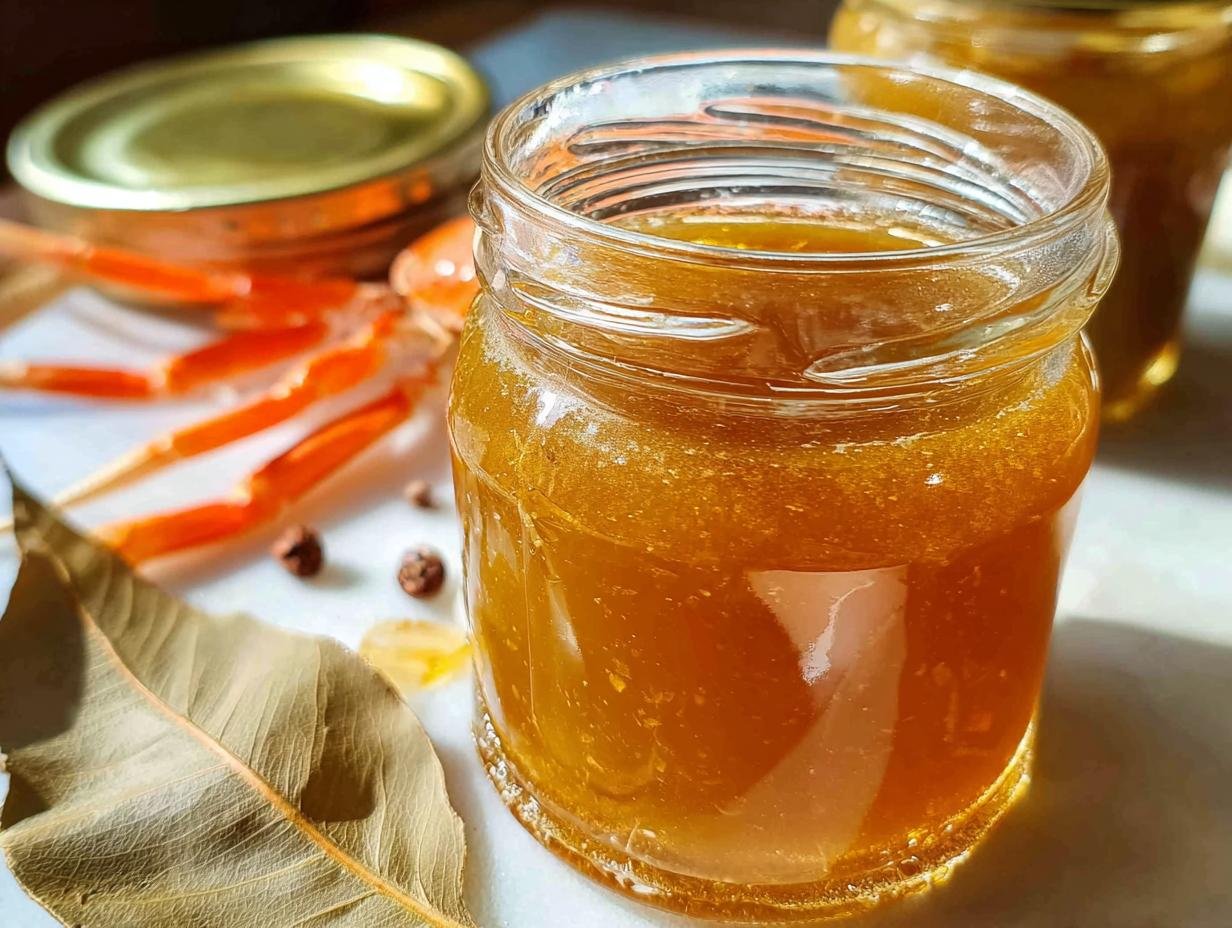Seafood stock has been my secret weapon for elevating weeknight meals, transforming simple dishes into something truly special. I remember the first time I tried making my own; I was amazed by the depth of flavor compared to store-bought versions. The aroma that filled my kitchen was incredible, promising a delicious meal to come. It’s so simple to make this homemade seafood broth, and the results are always worth it. Let’s get cooking!
Why You’ll Love This Seafood Stock
This homemade seafood broth is a game-changer for your cooking! It’s incredibly easy to whip up, making restaurant-quality flavor accessible any night of the week.
- You can use any shellfish shells you have on hand – shrimp, crab, lobster, it all works!
- It transforms simple ingredients into a rich, flavorful foundation.
- It’s perfect as a seafood base for soup, adding incredible depth.
- You’ll save money compared to buying pre-made stock.
- The aroma while it simmers is absolutely divine.
- It’s a versatile seafood base for soup or sauces.
- You can freeze it in portions for future use.
- It’s a much healthier alternative to store-bought stocks.
Seafood Stock Ingredients
Gathering your seafood stock ingredients is the first step to creating this amazing homemade broth. You’ll need about 4 cups of shellfish shells, which you can collect from shrimp, lobster, crawfish, or crab – a great way to use up leftovers! We’ll also use 2 tablespoons of neutral oil for roasting, which really helps develop flavor. For aromatics, grab 6 garlic cloves, crushed, 1 large celery stalk, chopped, and 1 large onion, chopped. A single carrot, chopped adds a touch of sweetness. Don’t forget 3 tablespoons of tomato paste; it adds a wonderful depth and color. A splash of ½ cup dry white wine helps deglaze the pan and adds acidity. Finally, we need 1 bay leaf, 10 whole peppercorns, 2-3 teaspoons of salt, and 8 cups of water to complete the liquid base.
How to Make Seafood Stock
- Step 1: Heat 2 tablespoons of neutral oil in a large Dutch oven or heavy-bottomed pot over medium-high heat.
- Step 2: Add your 4 cups of shellfish shells to the hot pot. Roast them for about 10 minutes, stirring occasionally, until they start to turn a nice pink or red and smell toasty. This pan-roasting is key to developing that deep flavor in your seafood stock.
- Step 3: Toss in the 1 large onion, chopped, 1 large celery stalk, chopped, and 6 garlic cloves, crushed. Continue to roast for another 5 minutes, stirring often, until the vegetables begin to soften and become fragrant.
- Step 4: Add the 3 tablespoons of tomato paste. Stir it well to coat all the shells and vegetables. Cook for about 5 more minutes, letting the tomato paste caramelize slightly – it will smell wonderfully rich and slightly sweet.
- Step 5: Pour in the ½ cup dry white wine. As it bubbles, use a wooden spoon to scrape up any browned bits stuck to the bottom of the pot. This is called deglazing, and it captures so much flavor for your seafood stock. Let the wine simmer and reduce by about half.
- Step 6: Add the 8 cups of water, 1 bay leaf, 10 whole peppercorns, and 2-3 teaspoons of salt. Stir everything together.
- Step 7: Bring the mixture to a gentle simmer. Once simmering, reduce the heat to low and let it cook for 45 minutes. Resist the urge to stir it too much during this time; just let it do its thing.
- Step 8: As it simmers, you might see some foam rise to the surface. Skim this off with a spoon. This step helps ensure your seafood stock is clear and has a clean taste.
- Step 9: After 45 minutes, taste the stock and adjust the seasoning with more salt if needed.
- Step 10: If you want an even more concentrated flavor, you can let it simmer uncovered for a bit longer to reduce.
- Step 11: Strain the liquid through a fine-mesh strainer set over a large bowl. If you have cheesecloth, lining the strainer with a damp piece will catch even finer particles.
- Step 12: Let the strained seafood stock cool completely to room temperature before storing.

Pro Tips for the Best Seafood Stock
I’ve learned a few tricks over the years to make my homemade seafood broth truly shine. These tips will help you achieve that perfect, rich flavor every time you make this fish stock recipe.
- Always keep a freezer bag dedicated to collecting shellfish shells. Mixing shrimp, crab, and lobster shells creates a more complex flavor profile for your seafood stock.
- Don’t rush the pan-roasting steps! Roasting the shells and vegetables builds a deep, foundational flavor that store-bought versions just can’t replicate.
- Skim off any foam that rises during simmering. This is crucial for a clear, clean-tasting stock, which is essential for a great seafood base for soup.
- If you don’t have white wine, a splash of lemon juice and a bit more water works as a substitute.
What’s the secret to perfect seafood stock?
The secret to a perfect seafood stock lies in the deep caramelization of the shells and aromatics. Roasting them well before adding liquid develops complex, savory notes that are the hallmark of the best seafood stock recipe.
Can I make seafood stock ahead of time?
Absolutely! This homemade seafood broth is fantastic for meal prep. Once cooled, store it in airtight containers in the refrigerator for up to 5 days, or freeze it in portions for up to 6 months. It’s ready to go whenever you need it.
How do I avoid common mistakes with seafood stock?
Avoid over-stirring during simmering, as this can make the stock cloudy. Also, don’t skip the straining step – using cheesecloth will catch tiny bits for a clearer final product. Lastly, ensure your shells are roasted well for maximum flavor.
Best Ways to Serve Seafood Stock
This versatile stock is your secret weapon for so many dishes! It’s the perfect foundation for a rich, flavorful seafood base for soup, like a classic cioppino or a creamy chowder. I love using it to make risottos extra special, infusing every grain of rice with oceanic goodness. It’s also fantastic for poaching delicate fish or shrimp, or as a flavorful liquid for cooking grains like couscous or quinoa. For a simple yet elegant meal, serve it as a light broth with some crusty bread on the side.
Nutrition Facts for Seafood Stock
Here are the approximate nutritional values per serving of this homemade seafood broth:
- Calories: 50
- Fat: 2g
- Sugar: 2g
- Sodium: 1200mg
- Protein: 3g
- Carbohydrates: 5g
Nutritional values are estimates and may vary based on specific ingredients used.
How to Store and Reheat Seafood Stock
Properly storing your finished seafood stock is key to enjoying its delicious flavor whenever you need it. Once the stock has finished simmering and has been strained, let it cool completely to room temperature. This is important to prevent condensation inside your storage containers. For short-term storage, pour the cooled homemade seafood broth into airtight jars or containers. It will keep well in the refrigerator for up to 5 days. For longer storage, freezing is your best bet! You can freeze it in ice cube trays or silicone molds for convenient ½ cup or 1 cup portions. Once frozen solid, transfer the stock cubes to a freezer-safe bag. This way, your homemade seafood broth can be stored in the freezer for up to 6 months. To reheat, simply warm gently on the stovetop over low heat until thawed and hot. You can also thaw frozen portions overnight in the refrigerator.

Frequently Asked Questions About Seafood Stock
What is seafood stock and why should I make it?
Seafood stock is a flavorful liquid made by simmering fish bones, shellfish shells, and aromatics like vegetables and herbs. It’s the foundational flavor for countless dishes, from bisques to paellas. Making it yourself ensures superior taste and quality compared to store-bought options, and it’s a fantastic way to use up seafood scraps!
Can I use fish bones instead of shells for seafood stock?
Yes, absolutely! You can certainly use fish bones and heads to make seafood stock. For a clear broth, it’s best to rinse them thoroughly and avoid the gills, as they can add bitterness. A fish bone broth recipe often includes white fish bones like snapper or cod for a clean flavor, and you can even combine them with some shellfish shells for added complexity.
How do I get the best flavor from my seafood stock?
To get the best flavor, start by roasting your shells and vegetables until deeply browned, which builds a rich foundation. Deglazing the pan with white wine also captures those delicious browned bits. Skimming the foam during simmering is crucial for a clean taste, and you can even simmer the finished stock down slightly to concentrate its flavor, making it an even more potent seafood base for soup.
What are some other ways to use homemade fish broth?
Beyond soups and chowders, this homemade fish broth is incredibly versatile. I love using it to cook risotto, adding a delicate seafood essence to every bite. It’s also perfect for poaching fish or shrimp, creating moist and flavorful results. You can even use it as the liquid base for paella or a flavorful sauce to serve with grilled fish.
Variations of Seafood Stock You Can Try
Once you’ve mastered the basic seafood stock, you might want to experiment with different flavors and ingredients. Trying variations is a fantastic way to tailor your homemade broth to specific dishes or dietary needs.
- Vegetable Fish Stock: For a lighter, vegetarian-friendly option, skip the shells and focus on fish bones and a robust mix of mirepoix (onion, carrot, celery), plus leeks and parsley stems. This creates a cleaner, more delicate flavor profile.
- Asian-Inspired Stock: Add fresh ginger slices, star anise, and a splash of soy sauce or tamari to the simmering liquid. This variation works beautifully as a base for noodle soups or stir-fries.
- Shellfish-Focused Stock: If you have a lot of lobster or crab shells, let them shine! You can omit the carrot and reduce the tomato paste slightly to let the rich shellfish flavor dominate.
- Fish Bone Broth Recipe: If you don’t have shells, a good fish bone broth recipe is ideal. Use bones from white fish like snapper or cod. Rinse them well, avoid the gills, and roast them thoroughly to build a deep, savory base for your broth.

Seafood Stock: 45 Min Flavor Secret
- Total Time: 1 hour 15 minutes
- Yield: 6 cups 1x
- Diet: Vegetarian
Description
Make this incredibly rich seafood stock from any shellfish shells in just over an hour! The easiest method for making restaurant-quality stock at home.
Ingredients
- 4 cups shellfish shells (from shrimp, lobster, crawfish or crab)
- 2 tablespoons neutral oil
- 6 garlic cloves, crushed
- 1 large celery stalk, chopped
- 1 large onion, chopped
- 1 carrot, chopped
- 3 tablespoons tomato paste
- ½ cup dry white wine
- 1 bay leaf
- 10 whole peppercorns
- 2–3 teaspoons salt
- 8 cups water
Instructions
- Heat oil in a Dutch oven over medium-high heat.
- Add shells and roast for 10 minutes, stirring occasionally.
- Add chopped onion, celery, and garlic. Roast another 5 minutes until vegetables begin to soften.
- Add tomato paste, toss to coat everything, and cook 5 more minutes until fragrant and slightly darkened.
- Deglaze pan with white wine, scraping up any browned bits.
- Add bay leaf, salt, peppercorns, and water.
- Bring to a simmer and cook for 45 minutes without stirring.
- Skim off any foam that rises to the surface.
- Taste and adjust seasoning.
- For more concentrated flavor, continue simmering to reduce.
- Strain through a fine-mesh strainer (line with damp cheesecloth, if you have it).
- Let cool to room temperature.
- Store in airtight jars in the refrigerator up to 5 days, or freeze in silicone molds for up to 6 months.
Notes
- Keep a freezer bag specifically for seafood shells. Shrimp, crab, crawfish and lobster shells all work beautifully and can be mixed together.
- Don’t skip the pan-roasting step! It develops deep flavors that make this stock special.
- The foam contains impurities from the shells. Removing it keeps your stock clear and clean-tasting.
- If you don’t have wine, use a little extra water plus a squeeze of lemon juice.
- Try removing the celery and adding fresh ginger for Asian-inspired dishes.
- Fresh herbs like thyme, tarragon, or rosemary can be added in the last 10 minutes of cooking.
- Freeze in ½ cup portions using silicone molds or ice cube trays. Once frozen, transfer to freezer bags for easy storage.
- For a more intense flavor, simmer the finished stock down to concentrate it further, it’s perfect for when you want maximum seafood flavor in minimal liquid.
- Prep Time: 15 minutes
- Cook Time: 60 minutes
- Category: Easy Recipes
- Method: stovetop
- Cuisine: American
Nutrition
- Serving Size: 1 cup
- Calories: 50
- Sugar: 2g
- Sodium: 1200mg
- Fat: 2g
- Saturated Fat: 0.5g
- Unsaturated Fat: 1.5g
- Trans Fat: 0g
- Carbohydrates: 5g
- Fiber: 1g
- Protein: 3g
- Cholesterol: 0mg

